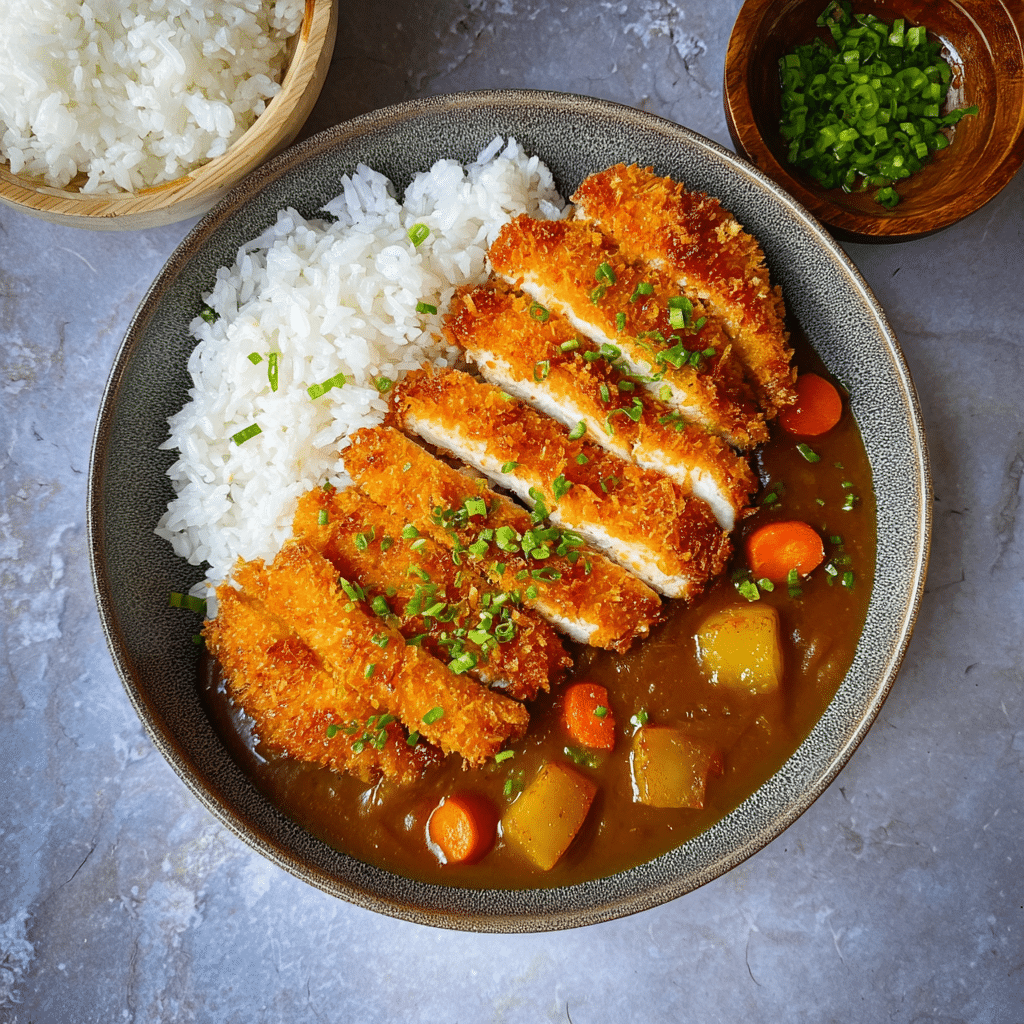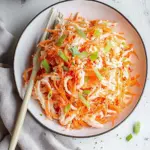The Irresistible Allure of Chicken Katsu Curry
Chicken Katsu Curry is a beloved Japanese dish that effortlessly fuses two culinary traditions into one comforting, flavor-packed meal. It combines the crispy, breaded texture of fried chicken cutlet (katsu) with the warm, savory depths of Japanese-style curry. This dish is a staple in Japanese households and eateries, from casual dining spots to bento boxes in convenience stores. Its popularity continues to rise globally due to its rich flavors, satisfying textures, and wide appeal among all age groups. More than just a weeknight meal, Chicken Katsu Curry is a perfect representation of how international influences can be blended with native cooking techniques to create something uniquely delicious.
A Fusion Dish Rooted in History
While Japanese curry may be thought of as traditional, it is actually a culinary import that dates back to the late 19th century during the Meiji era. British naval officers introduced curry powder to Japan, and the dish gradually evolved to suit Japanese palates. The Japanese version of curry is milder, slightly sweeter, and thicker than its Indian counterpart. It is also typically served with rice and includes ingredients like carrots, onions, and potatoes.
The “katsu” element—short for katsuretsu, the Japanese pronunciation of “cutlet”—was inspired by European breaded and fried meat dishes like schnitzel. Chicken Katsu, along with its pork counterpart (Tonkatsu), has since become a staple of modern Japanese cuisine. Combining these two beloved dishes—Japanese curry and Chicken Katsu—created a powerhouse meal that’s deeply satisfying and full of comforting nostalgia for many.
Flavor Profile and Texture
The beauty of Chicken Katsu Curry lies in its harmonious contrast of textures and flavors. The crispy chicken cutlet is coated with airy panko breadcrumbs that fry up to a golden perfection, delivering a satisfying crunch with every bite. Inside, the chicken remains juicy and tender. On the other hand, the curry sauce offers a smooth, velvety contrast. It is rich, aromatic, and savory with just the right balance of sweetness and spice, thanks to the blend of curry powder, soy sauce, garlic, ginger, and a touch of honey or apple.
When poured over freshly steamed rice and crispy chicken, the thick curry sauce not only ties the elements together but also acts as a flavor bridge—ensuring each bite is balanced, layered, and delicious.
The Importance of Panko and Curry Roux
Panko, Japanese-style breadcrumbs, is a game-changer when it comes to breading fried items. These coarse breadcrumbs stay crispier longer than traditional breadcrumbs and absorb less oil, resulting in a lighter and crunchier texture. They are essential for achieving the perfect Chicken Katsu.
The curry roux is equally crucial. Unlike Indian or Thai curries that rely on coconut milk or heavy spices, Japanese curry often uses a thick roux made with flour and fat. This base is infused with curry powder and then simmered with stock and vegetables. Many home cooks use pre-made Japanese curry blocks for convenience, but making the roux from scratch can elevate the dish significantly, allowing full control over flavor and thickness.
Customizing the Dish
One of the reasons Chicken Katsu Curry is so widely loved is its adaptability. You can adjust the spice level of the curry to your liking, from mild to extra hot. Vegetables like peas, mushrooms, and bell peppers can be added or swapped, depending on personal preferences and seasonal availability. Some people enjoy a boiled egg or cheese topping for added richness.
You can also vary the protein—while chicken is the star in this version, pork katsu, tofu katsu, or even seafood cutlets work wonderfully with the same curry base. For a healthier twist, the chicken can be baked or air-fried instead of deep-fried, still delivering a crispy texture with less oil.
Serving Suggestions and Pairings
Traditionally, Chicken Katsu Curry is served over short-grain white rice, which is slightly sticky and helps soak up the thick curry sauce. The rice provides a neutral base that complements the richness of the katsu and the boldness of the curry.
For an authentic touch, you can serve it with Japanese pickles such as fukujinzuke (a slightly sweet relish made from finely chopped vegetables) or rakkyo (pickled shallots). These pickles offer a contrasting tangy bite that cuts through the richness of the curry.
On the side, a simple cabbage salad or miso soup makes a light and refreshing counterbalance. Some enjoy washing down the meal with a cold glass of green tea or a Japanese beer, which helps cleanse the palate.
A Crowd-Pleasing Favorite
Whether you’re cooking for family, entertaining guests, or preparing a comforting solo dinner, Chicken Katsu Curry is always a hit. It’s kid-friendly, filling, and packs a delicious punch without requiring overly complex ingredients. Moreover, it’s a great way to introduce someone to Japanese cuisine, thanks to its familiar components—fried chicken, flavorful sauce, and rice.
Leftovers store well, and the curry tends to deepen in flavor overnight, making it a fantastic make-ahead meal. You can store the sauce and chicken separately to maintain the crispness of the katsu when reheating.
Nutritional Considerations
While Chicken Katsu Curry is indulgent, it can also be part of a balanced meal. Using skinless chicken breast, opting for a shallow fry, and loading the curry with vegetables can reduce the calorie and fat content. Brown rice or cauliflower rice can be substituted to increase fiber and reduce carbs. As with many home-cooked dishes, its nutritional value is easily adjusted by controlling portion sizes and ingredients.
Popular Variations Around Japan
In Japan, regional and restaurant-specific variations of Chicken Katsu Curry are abundant. Some versions use spicy curry with added chili, while others may sweeten the sauce using grated apple or even chocolate. Certain restaurants in Tokyo specialize in “extra crispy” katsu with a double-breading method, while others in Osaka may serve the katsu on the side to preserve its crunch.
Another unique twist is the addition of a soft-cooked egg, either on top or hidden beneath the katsu. The richness of the yolk adds another layer of creaminess and decadence to the dish. Vegan and vegetarian versions are also increasingly popular, using plant-based meat alternatives or tofu and dairy-free curry roux.
Cultural Significance
Beyond its taste, Chicken Katsu Curry holds cultural significance in modern Japanese food culture. It represents the country’s embrace of foreign influences and its ability to adapt them into something uniquely Japanese. From school cafeterias to high-end curry houses, the dish transcends class and age. It’s often associated with feelings of home, nostalgia, and warmth—making it not just a meal, but a cultural experience.
Conclusion
Chicken Katsu Curry is more than just a dish—it’s a culinary embodiment of comfort, creativity, and cross-cultural innovation. With its perfectly balanced flavors and irresistible textures, it brings joy to countless dining tables across the world. Whether you enjoy it at a Japanese diner or recreate it in your own kitchen, the satisfaction it offers is universal.
Its simple components—crispy chicken, aromatic curry, and fluffy rice—come together to create a dish that is as nourishing for the soul as it is for the body. Chicken Katsu Curry is proof that sometimes, the most heartwarming meals come from combining the best of multiple culinary worlds into one harmonious plate.






